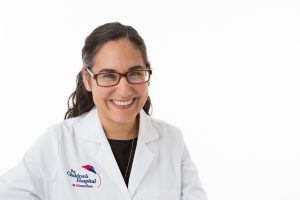On Dec. 12, 2019, the Senate Committee on Health, Education, Labor & Pensions passed Title VII of the Public Health Service Act (S.2997), clearing a major hurdle for legislation that could help the pediatric rheumatology community as it struggles to maintain a workforce to serve its patient population.
In the first few months of 2020, the Senate will vote on reauthorization of the legislation, which includes the Investment in Tomorrow’s Pediatric Health Care Workforce Act (S.2443). This act stipulates a loan repayment program under which pediatric subspecialists with educational loans who are working in areas in with a provider shortage would be eligible for $35,000 per year in loan repayment.
Tiny though the community of roughly 300 active American pediatric rheumatologists may be, there is little doubt senators voting on this bill in committee had us in mind. Sen. Lamar Alexander (R-Tenn.), who chairs the committee, referred to this legislation in the official press release as work “to incentivize doctors to fill shortages in pediatric specialties, such as pediatric cardiologists or rheumatologists.”
This small nod is thanks to more than a decade of advocacy by the ACR for legislation to help the pediatric workforce. In 2019 alone, ACR volunteers and staff made approximately 230 visits to congressional offices and sent 2,000 emails to Congress.
My Story

Tamar Rubinstein, MD, MS
I first wrote to Congress 10 years ago, the summer I graduated from medical school. That letter was to Sen. Barbara Mikulski (D-Md.), asking her to co-sponsor the Arthritis Prevention, Control & Cure Act of 2009. That bill proposed to amend the Public Health Service Act to implement a National Arthritis Action Plan, which included, among other things, a loan repayment program for pediatric rheumatologists.
In the letter to Sen. Mikulski, I wrote: “As a new pediatric resident interested in entering pediatric rheumatology and a newly graduated medical student with close to $200,000 in loans to repay, I can’t tell you how many people have tried to dissuade me from this track purely from a financial standpoint.”
The list included my soon-to-be brother-in-law, who asked me over dinner one night whether I found dermatology interesting. At the time I graduated from medical school, my husband was a year out of nursing school, laden with his own educational debt.
Sen. Mikulski did co-sponsor the bill. Later that year, I and other members of the ACR’s Pediatric Rheumatology Resident Program discussed it with cautious optimism. I was sitting at a table with a fellow I had met in my medical school pediatric rheumatology elective (and who would later become my chief). “Hopefully, it will be in effect by the time you enter fellowship,” she said. But like many bills, this one died in committee.

